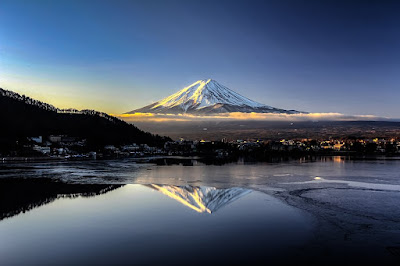The Tale of the Bamboo Cutter "Taketori Monogatari"
Taketori Monogatari is a story written in the early Heian period
is said to be the oldest story in Japan.
It is also called "The Tale of the Princess Kaguya"
and is one of the stories that everyone in Japan knows.
The early Heian period was when the Japanese syllabary "hiragana" was created.
The Tale of the Bamboo-Cutter is also one of the earliest stories written in hiragana.
The author of The Tale of the Bamboo-Cutter is unknown, but it is said that he was an intellectual who studied academics and Buddhism, and had a talent for waka poetry
it is thought that he was a nobleman who could obtain valuable paper.
Specifically, there are theories that he was Sugawara no Michizane or Ki no Tsurayuki.
 |
| Sugawara no Michizane |
 |
| Ki no Tsurayuki |
By the way, at the end of the story, Kaguya-hime returns to the moon, but there is actually an epilogue after that.
The Mikado, who fell in love with Kaguya-hime, receives a letter and the elixir of life from her, but
thinking "What use is the elixir of life if I can't even see her?", he ordered it to be burned on the highest mountain closest to the moon.
The mountain where the elixir of life was burned was named "Fuji no Yama" (Mt Fuji), and this is the origin of the name "Fuji".
 |
| Mt Fuji |
In fact, in the early Heian period when Taketori Monogatari was written, M
t Fuji was experiencing a lot of large-scale eruptions.
Incidentally, the first person to translate Taketori Monogatari into English was "Frederick Victor Dickins", who studied Japanese literature with "Minakata Kumagusu", and he also translated other old Japanese literature and Hyakunin Isshu.
 |
| Minakata Kumagusu |
If you want to know more, this is a good reference.
Mt.fuji and Princess Kaguya museum https://museum.city.fuji.shizuoka.jp/




Comments
Post a Comment